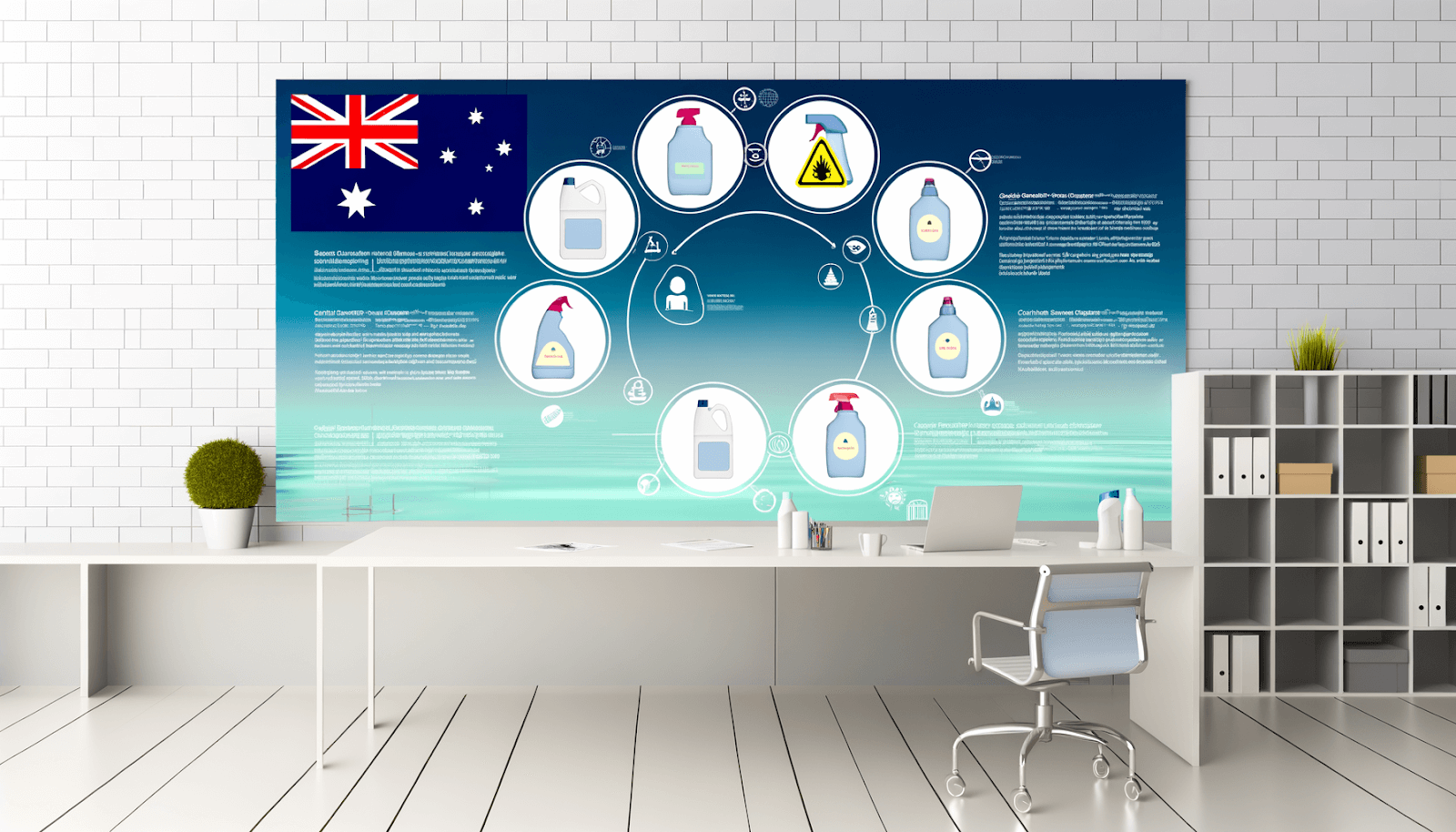
Navigating Australian Regulations for Cleaning Chemical Usage
G'day! If you're like me and often find yourself elbow-deep in cleaning tasks, whether at home or at work, it's crucial to understand the regulations surrounding cleaning chemicals in Australia. Let's embark on this journey together to ensure compliance and safety.
Understanding Cleaning Chemicals
Before diving into the regulatory nitty-gritty, let's chat about what cleaning chemicals are and why they're so important. Essentially, cleaning chemicals are substances formulated to assist in cleaning by breaking down dirt and grime. They come in various types, each with a unique purpose, such as disinfectants, detergents, and degreasers.
Types of Cleaning Chemicals
- Detergents: These are surfactant-based cleaners, perfect for removing everyday dirt and oil. Whether it's laundry, dishes, or general surfaces, they work by emulsifying the grime.
- Acid Cleaners: Best for those stubborn rust and mineral stains, acid cleaners dissolve these contaminants, making your bathroom and appliances shine.
- Alkaline Cleaners: You'll want these for breaking down fats and oils, often found in oven cleaners and drain openers.
- Abrasives: Ideal for manual scrubbing, they help tackle stubborn dirt and tarnish.
- Disinfectants: Critical for killing bacteria and viruses, especially in areas where hygiene is paramount, like kitchens and healthcare settings.
- Solvents: Great for sticky situations (literally), solvents help dissolve oils and greases.
- Enzyme Cleaners: Perfect for organic stains, they break down materials like blood or food effortlessly.
Regulations Governing Cleaning Chemicals in Australia
Now, onto the main act: understanding the regulations. In Australia, the usage of cleaning chemicals is governed primarily to ensure safety for users and the environment.
Australian Legislation and Guidelines
The Australian government has established several guidelines and standards for using cleaning chemicals safely:
- Workplace Health and Safety (WHS): Ensures that workplaces comply with safe handling and storage practices, which includes proper labelling and usage instructions.
- Australian Industrial Chemicals Introduction Scheme (AICIS): Manages the introduction of industrial chemicals, requiring businesses to register and notify authorities about any chemical usage.
- Environmental Protection Laws: These laws control how chemicals are disposed of to minimise environmental impact.
Compliance with Safety Data Sheets (SDS)
Every cleaning chemical you encounter should come with an SDS. This document provides crucial information on safe use, potential hazards, first-aid measures, and handling procedures.
Best Practices for Handling Cleaning Chemicals
Ensuring that you handle cleaning chemicals properly can't be overstated. Here’s a quick rundown to help you keep it safe and compliant:
Storage
- Store chemicals in a cool, dry place, well out of reach of children and pets.
- Ensure areas are well-ventilated and keep chemicals in their original, labelled containers.
Usage
- Follow instruction labels carefully to avoid misuse or damage to surfaces.
- Use the right tools alongside cleaning chemicals like mops, cloths, and scrubbers to enhance cleaning efficiency.
Disposal
- Dispose of chemicals according to local regulations.
- Avoid pouring them down the sink unless specified. Instead, take them to appropriate hazardous waste facilities if necessary.
Implementing Effective Cleaning Practices
Combining cleaning chemicals effectively can maximize their cleaning power. Here're some strategies:
Combining Agents
- Consider using multi-surface or multi-purpose cleaners to cut down on the number of products needed.
- Avoid mixing different cleaning agents as this could lead to harmful chemical reactions.
Utilising Specialized Tools
Using the right tools is as important as choosing the correct chemical. Brushes, scrubbers, and appropriate cleaning cloths can significantly improve results and protect surfaces.
Common Ingredients and Their Roles
Knowing what's in your cleaning products helps you choose the right one for the job:
- Surfactants: They help water do its job by breaking down and removing dirt and oils.
- Alcohols: Often found in solvents, great for dissolving oils, greases, and offering some antimicrobial benefits.
- Chlorine Bleach: Known for its disinfecting and whitening abilities, but it's also a strong oxidizing agent.
- Chelants: They prevent dirt re-attachment and handle rust and mineral deposits.
- Fragrances: While they don't clean, they provide that classic 'clean' smell we all love.
Conclusion
In conclusion, navigating the world of cleaning chemicals in Australia involves understanding both the types of cleaning products available and the regulations governing their use. Armed with this knowledge, you can ensure both safety and compliance, while still achieving a sparkling clean environment. Whether you run a business or just want to manage your home correctly, stay informed and follow these guidelines to keep everything safe, clean, and efficient.
